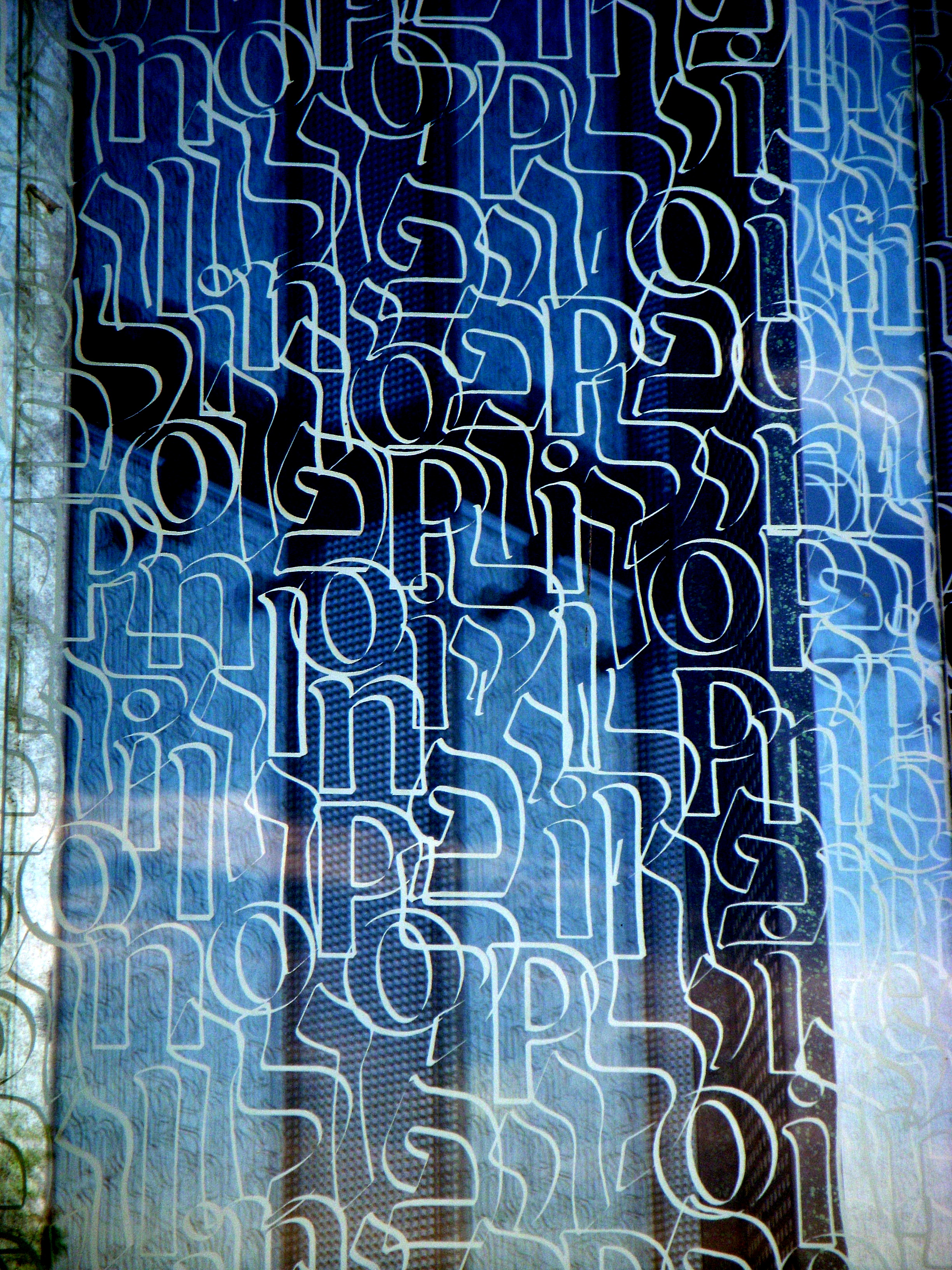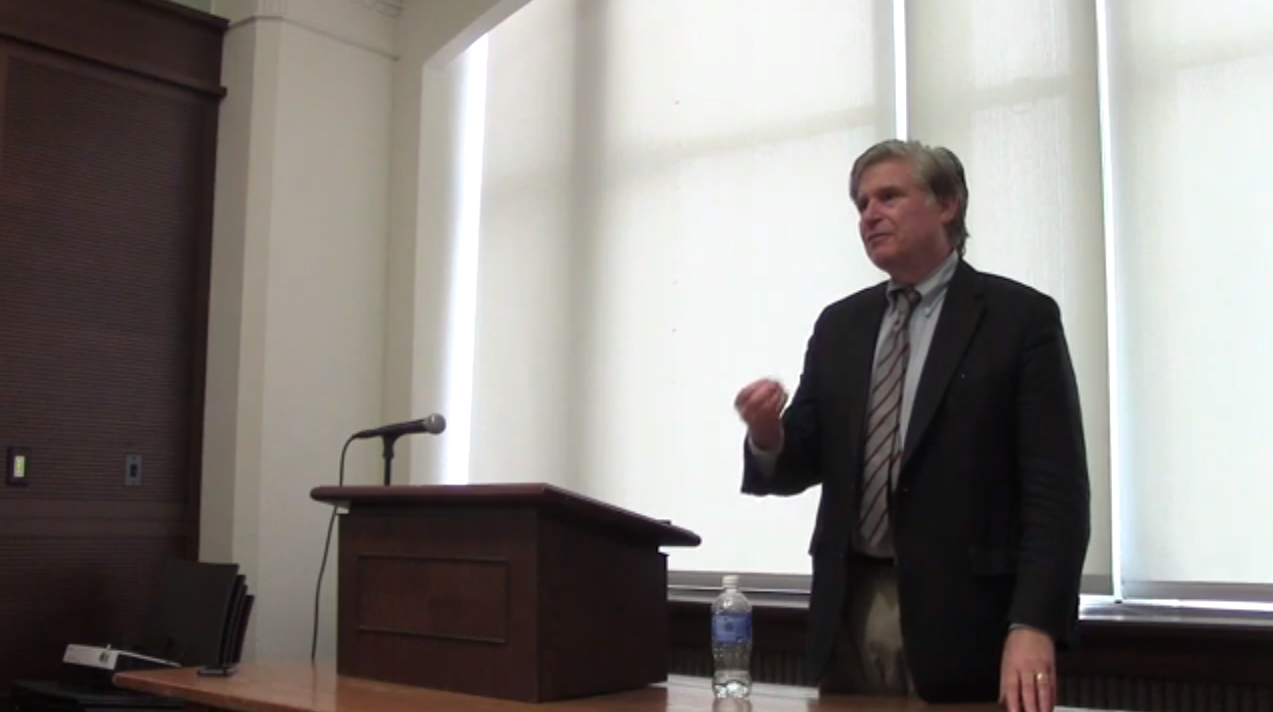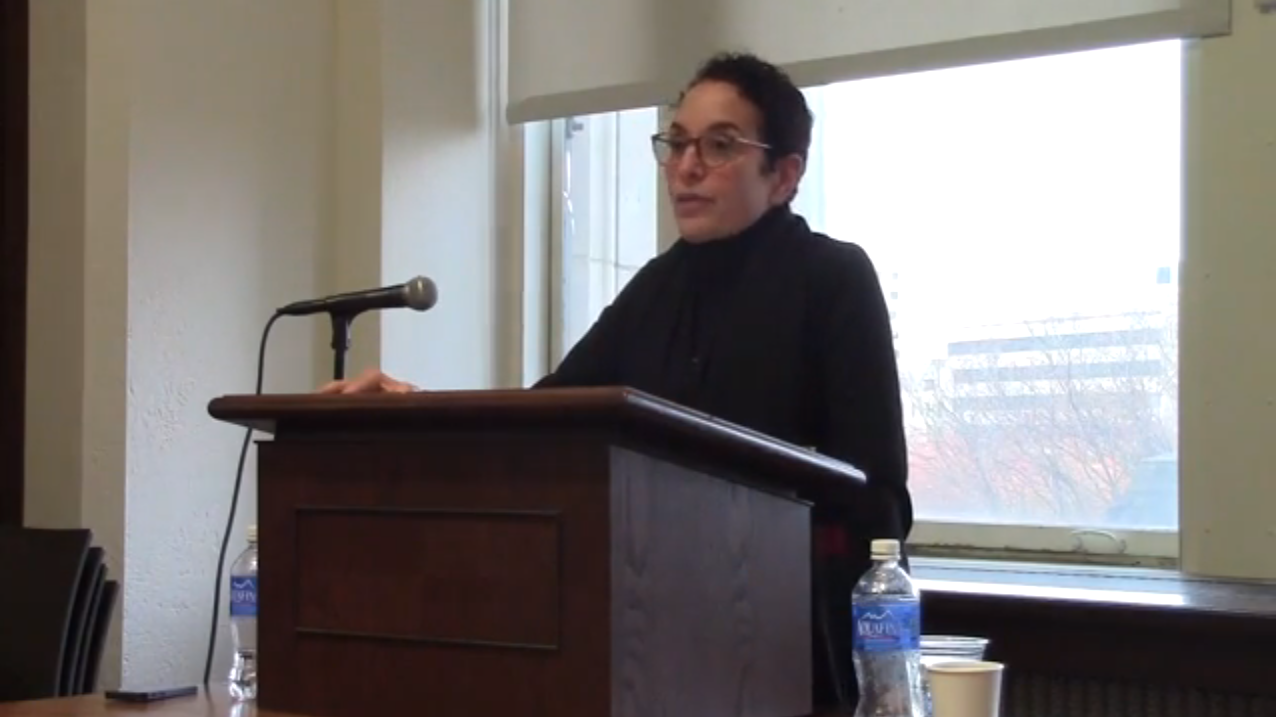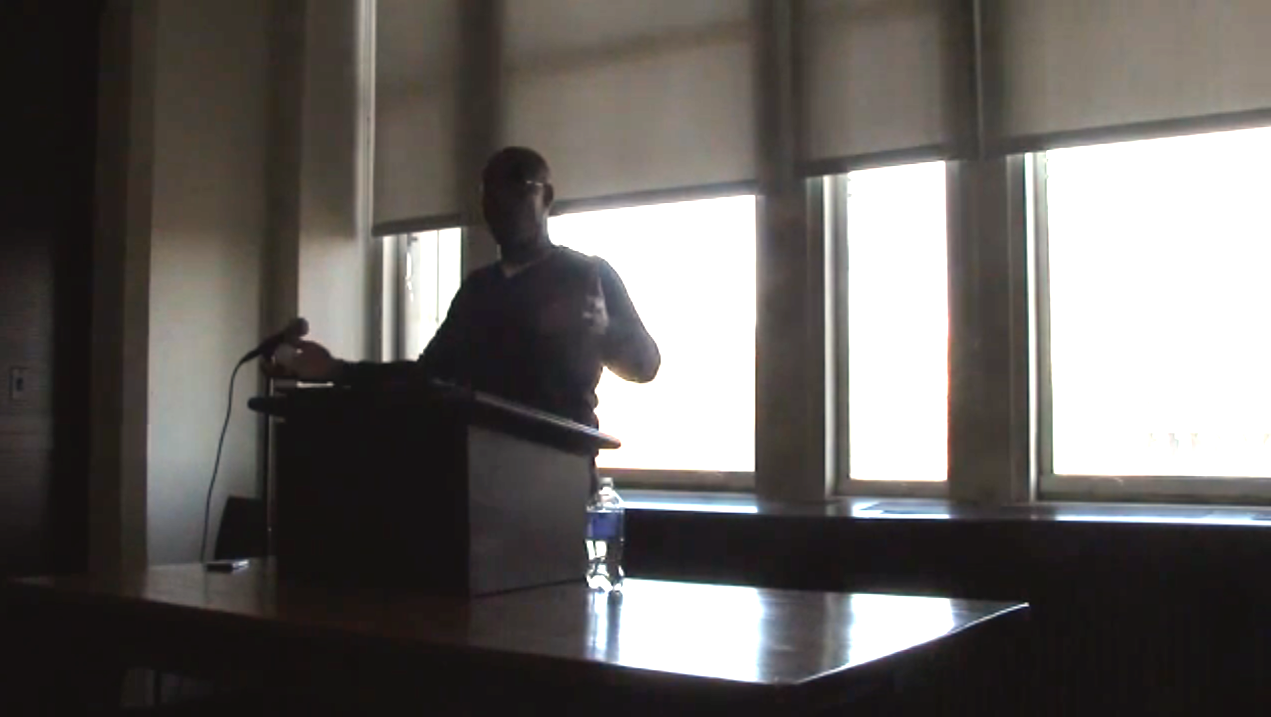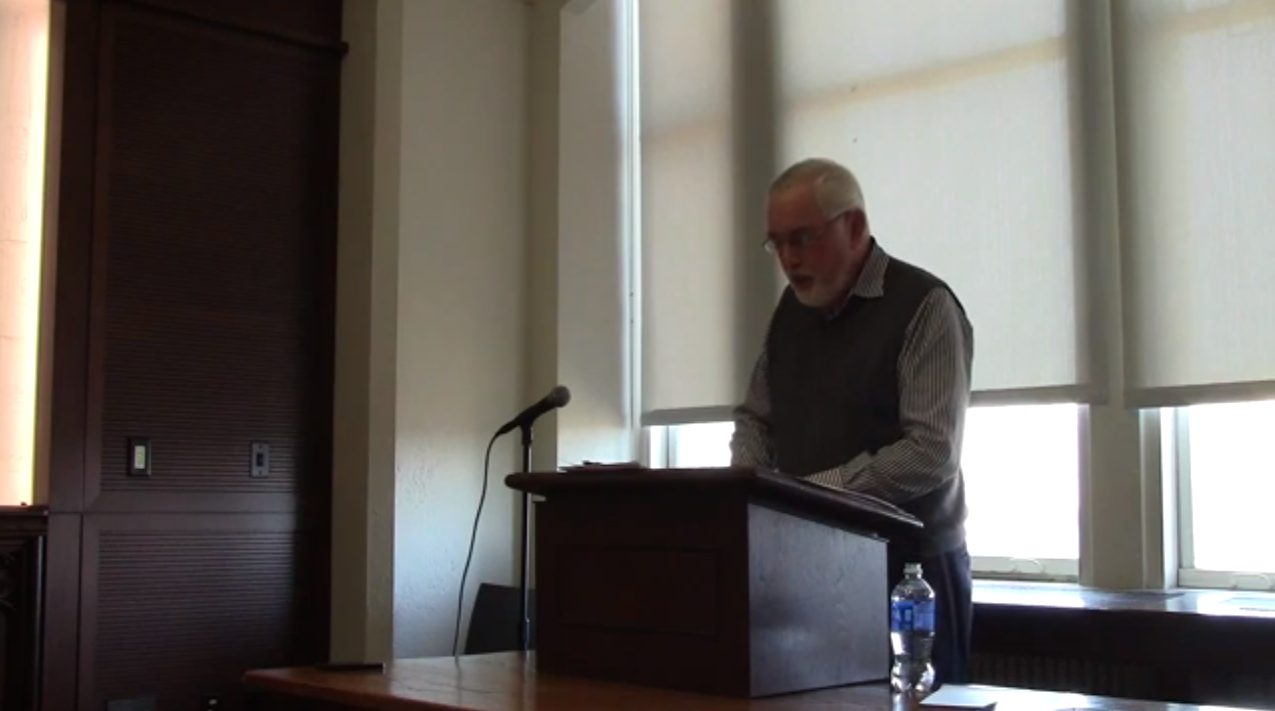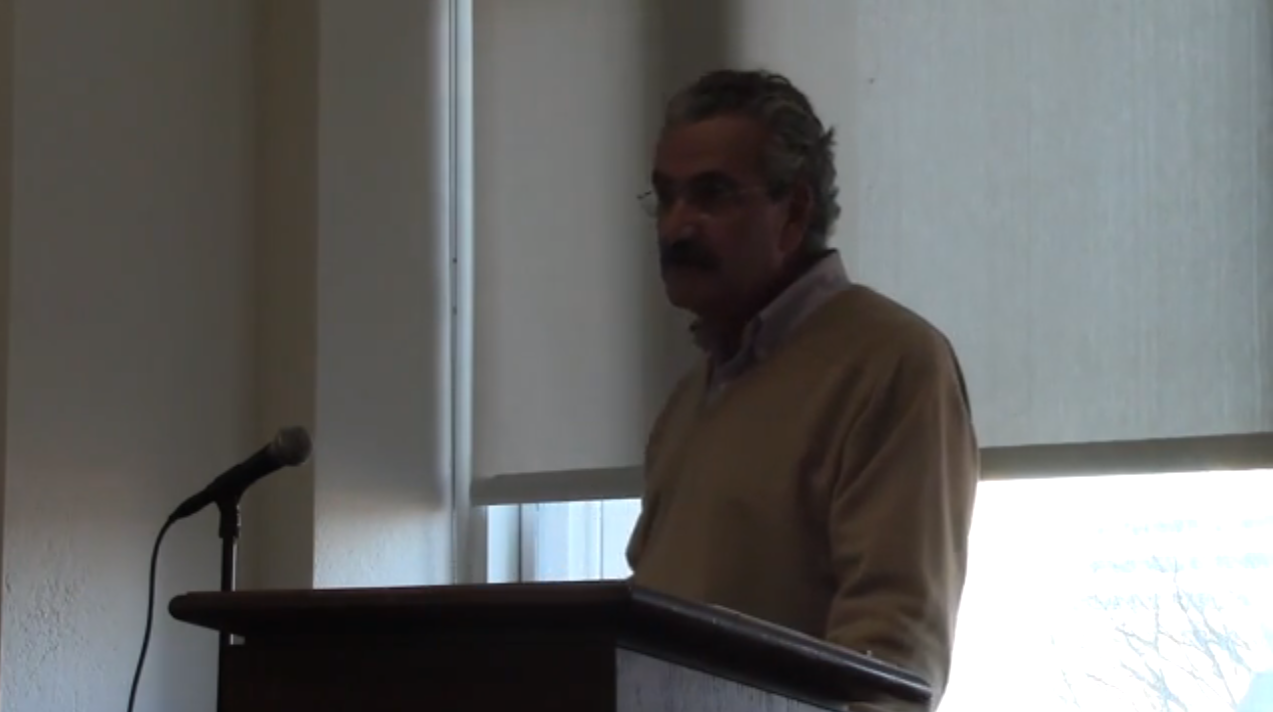The recent Boston Review issue on “Race and the Poetic Avant-Garde,” brings together a range of poets and scholars including Erica Hunt, Prageeta Sharma, Cathy Park Hong, Daniel Bortzutsky, and Simone White–all of whom will appear in a special upcoming issue of boundary2 on “Race and Innovation”–to consider the long held cultural belief that “black” poetry and “avant-garde” poetry are necessarily in separate orbits.
Both the Boston Review issue and the upcoming boundary2 issue find particular urgency in thinking through considerations of race and experimental poetics as the current controversy around Kenneth Goldsmith’s conceptual art piece (in which he reads the Michael Brown autopsy report) continues to raise questions about the black body, expendability, and how poets might speak in ways that refuse reproductions of race, gender, and class hierarchies.
_____
Thinking the Permissible, or Speaking in Common
_____
In this paper written for the MLA roundtable “Toward an Academic Commons: Academic Freedom and Sites of Contested Speech,” Colin Dayan reflects on what happens when academic freedom is cornered and subsumed by the demands of “civility” and “rationality.”
_____
And these are knaves that brawl for better laws
And cant of tyranny in stronger powers
Who glut their vile unsatiated maws
And freedoms birthright from the weak devour
–John Clare, “To a Fallen Elm”
Who gets to speak? “To speak,” Fanon wrote in Black Skin, White Masks is to exist for the other. “To speak means to be in a position to use a certain syntax, to grasp the morphology of this or that language, but it means above all to assume a culture, to support the weight of a civilization.” To acquire a “civilizing language,” then, is to be an exile in your own land, however we define the terrain of personal significance and conviction.
The “academic commons,” is something of an oxymoron, a paradox as heady as St. Paul’s encounter with the vexation of bodily resurrection. Must not a new definition of the body be coined? The crux of the matter lies in the spirit that is also the flesh, in something quite intangible, even insensate, but persistent and always quite thing-like.
The call to the commons, to a “common ground,” or, as some would endorse “the common interests,” is to revel in what we as teachers and students share “in common.” But who is to say what the ground of the common, the commonplace or commonality is? As Morrison wrote in Beloved, “definitions are always in the hands of the definers.” To hold ideas in common is much like the call for consensus: whoever calls for this fellowship has a pretty good idea of what is or is not to be accepted or permissible as shared values. Or to put it more bluntly, these values are akin to holding certain “truths to be self-evident.” As Justice Taney made explicit in his opinion in Dred Scott: “we the people” was never meant to include that class of persons who carried the “indelible mark” of “degradation”:
The men who framed this declaration were great men — high in literary acquirements, high in their sense of honor, and incapable of asserting principles inconsistent with those on which they were acting. They perfectly understood the meaning of the language they used, and how it would be understood by others, and they knew that it would not in any part of the civilized world be supposed to embrace the negro race, which, by common consent, had been excluded from civilized Governments and the family of nations, and doomed to slavery.
Which people, or persons, or members of the global Academy are excluded from the commons? Zones of exclusion mark off indelibly the lives that are cordoned off, trapped, demolished, bulldozed, expropriated, uprooted, by-passed.
But for some of our colleagues, those of us who would bring these lives to light are guilty of “partisan politics,” “purges,” and “censorship,” even though there is absolutely no evidence of such practice or intent. Politics is never separate from scholarship. Thought, imagination, and learning is always enhanced by collision and conflict. In “On Lyric Poetry and Society,” Theodore Adorno wrote, and I paraphrase, any poet who claims not to be political is in fact proclaiming a politics—and I would add—silencing others in a far more devious because subtle way.
* * * * * * * * *
Why should I speak? I’ve always been haunted by Gramsci’s warning that we are all “experts in legitimation” and by the savvy insight of Bourdieu and Passeron in Reproduction in Education, Society, and Culture published in 1977, that we – no matter what we intend—can never shed that ermine robe of authority. An authority honed to say what needs to be taught and thought in the right, the tasteful, the distinctive and recognizable—the civil—way.
But there is always a politics to the under-read and the critical background against which such silences are made. William Carlos Williams recognized the silencing generated by experts, the careening authority of the estimable critics. Before the formidable and raging Book 3 of Paterson, against the background of a library burning and books in flames, he scorned the “knowledgeable idiots, the university,/…../The outward masks of the special interests/that perpetuate the stasis and make it profitable.”
He recognized how inextricable is the language, the craft, the tools of scholarship from the casual disregard, the everyday violence in the “corrupt cities.” So it was not artlessness that he wanted but something else, something he called “the foulness”—the kind of writing that threatened the moneyed and the privileged, the extensions of state-sanctioned racism and its sanguine exclusivity.
The affront to the reasonable, the necessary, and the secure matters now more than ever. Reasonable consensus and civility: these words engage me, unsettled as I am by the prospect of divisions (not only of subject but also genre) that allow the continued dispossession of those creatures – human and non-human alike–who remain outside the circle of grace, delivered to subjection without recourse. How can we shed the mantle of civility, consensus, and rationality just long enough to question the claims of decency?
How do we speak? When it comes to matters of civility and befouling, we need to question our role as teachers and scholars, as well the threats to our profession by a silencing that is racially driven though culturally masked. The remedy of culture always excuses or conceals the experience of racism. In this time of terror, in our complicity with “kill lists,” drone strikes, global dispossession, mass incarceration, and murders of black citizens on our streets, what are the choices offered us as academics?
A cure for all kinds of threats, reasonableness has long been a way to extend persecution, civil death, and torture. But this rationality, like the theory that accompanies it, is tied to figurative power, and its metaphors can at any time become more insistent. What the anthropologist and historian, the late Michel-Rolph Trouillot, called the “explanatory power of culture” allowed the contexts for inequality and racism to continue. Indeed, they became harsher because hidden by the call for a common ground.
Our embrace of the “commons” or “academic commons,” though well-intentioned, risks enabling the false ideal of “consensus” that always rears its ugly, if “reasonable” head just when social and racial stratification is at its worst. Against the fashionable cartography of the commons, or a search for common ground, stands the language of stigma, incarceration, control—and downright extermination. Should we not reclaim the singularity of lives that do not span borders, or more precisely, who never —at least not in this country—gained the right to have rights in common?
Matters of terminology delimit privilege, just as they silence the disenfranchised, the invisible ones, who are always quite visible though objects of serene disregard. Our thought should be supple and ever watchful for the terms that perpetuate the very contexts of inequality—and specifically, racism. I’m grappling here with the push-and-pull of the call for the commons, always moderated and even reproduced by the humanitarian concern that is analogous to it, and hence always already closed to criticism. I learned from Trouillot—may he rest in peace—how the most benign of academic trends carried with it a strategy of extermination that always targets people of color, the poor or the powerless. He knew its eugenic violence even as he confronted its universalizing promise, what he called “totalitarian humanism” and the bugbears of academia: civility and compromise.
* * * * * * * * *
Retaliation hides behind a logic that is at once exclusionary and authoritarian. This policing of thought indulges in all manner of intolerant behavior. In the context of the de-hiring of a scholar like Salaita, we have sought in our conscience how to respond to coercion and threat found in the least likely of places—the university’s so-called “ivory tower.”
Sickened by the civility-mongers’ pieties and the costs to scholars who dare to think hard and feel passionately, I recall Poe’s disdain for the oracles of “higher morality.” These “thinkers-that-they-think” used “civility”–and all such words for self-righteous sentiment–to destroy literary careers and exclude anyone who threatened the status quo. Such entrenched proclivities for what Poe condemned as “doggerel aesthetics” masked the ugly money-fundament to such cunning ideality. What has happened to Steven Salaita matters to us all, no matter our views or our assumed status in the groves of academe. The resilience of genuine academic freedom is that it ensures that these abuses, and the watchdog groups and alumni that abet them, are no longer hidden from the eyes of the world, immune to the prescriptive force of morality, beyond the judgment of society, masked by the appeal to “civility.”
_____
Letter from Warsaw
an essay by Charles Bernstein
~
In November 2014, my wife, Susan Bee, and I visited Lodz and Warsaw, Poland, for the first time, along with our friend, the poet Tracie Morris. Susan’s mother was born in Lodz, moving to Berlin when she was around five. When I spoke at the American centers at the University of Lodz and Warsaw, I acknowledged standing on the ground of a great experiment from the decade before I was born, which aimed to expel difference in order to increase harmony through sameness, but the move toward homogenization versus miscegenation is powerful in the Americas as well, since the poetics of the Americas is the continuation of European poetics by other means.
When I explore the poetics of representation of the Systematic Extermination Process, I said in Warsaw, I don’t do so as an American looking at Poland and Germany but as someone whose intellectual and cultural foundations are European. I feel it as much my story as anyone else now alive and that a part of European culture destroyed here lives on with me, in and as an American, and is expressed through a commitment to the syncretic and miscegenated poetics of Americas.
The aversion of an originary or authentic or correct language is foundational for the poetics of Americas and makes a sharp contrast with those European (and American) nationalists that place a single language as fundamental to national or literary identity or who work to police national identities in ways that go beyond being born in a place, which, unlike in parts of Europe, is sufficient for U.S. citizenship. Several years ago, at the urging of my daughter, my father-in-law, who was born and grew up in Berlin, tried to reclaim his German citizenship under repatriation laws. His request was denied because he had never actively claimed this citizenship during the Nazi period, when he was a teenager. He was told that he was Polish, the country of origin of his parents. But he would be unable to claim Polish citizenship because, for that, knowledge of Polish is required; Yiddish was not then, nor is it now, considered a proper language of this nation, which was just the problem in the first place, now compounded. (As long as monoculture laws stand in Poland, the stain of the destruction of the Jews will be ineradicable.)
The power of American poetry comes from the mixing of many languages and the resistance to the dominance of any one language, including English – or anyway and one kind of English. As I argue in “The Poetics of the Americas” in My Way: Speeches and Poems, it is the overturning of standard English by second languages and vernacular/dialect speakers that defines American poetry, which is not to say that there is no resistance to this idea in America.
The question of who owns a nation or a people is not, of course, just one of language. We can say in the U.S. that Occupy Wall Street raised the specter of the one percent whose control is through cultural tolerance combined with economic dominance. But the closer analogy in the U.S. for the systematic extermination process here is the mass incarceration of African-American young men, stripping them of opportunities to fully participate in American cultural and economic life.1 In Poland, you have about 224 prisoners per 100,000 people, in the US it’s over 750 but for some age groups of black men it’s over 10,000, one in nine people in that population. More than one in three young black men without a high school diploma is currently behind bars.2
In Warsaw, we found an extraordinary new museum created as if from ashes. POLIN: The Museum of the History of Polish Jews is a site-specific work, situated on the ground of the Jewish Ghetto and as such serving as a memorial as well as a tribute to those who fought in the uprising. The museum’s main entrance is directly across from the more traditional and figurative “Monument to the Ghetto Heroes”, which was erected in 1948. The meaning of the museum is fundamentally connected to its location: as we descended into the core exhibition on the lower level, a ghostly presence makes itself felt and was a constant, and welcome, companion. This is a museum not of artifacts but of the historical record. POLIN overwhelms not with abstract splendor or holocaust memorial kitsch (as in the statue in front of Berlin’s Friedrichstrasse station, of children going off to “camp” as if the camp was “summer” and not “death”).3 This is a museum of deep, or thick, description. In place of sentimental, monumental, or abstract gestures of loss, icons that mark an absence, POLIN, in its core exhibition, curated by Barbara Kirchenbaum-Gimlet, provides a superfluity of what was present to substantiate (and transubstantiate) what has been lost. The museum is a not a funeral pyre but a living archive of what the Jews called Po-Lan when they arrived in the Middle Ages. And it succeeds in making indelible the presence of the Jews in and as Poland: not an eradicated blip in Polish history but as ineradicable thread in the fabric of Poland. Ineradicable even after being eradicated. As in Poe’s “Tell-tale Heart” –– under the floorboards that seem to seal us off from the ground, is a beating heart –– or here, let’s just say, once the floor board that covers the ground is removed, a vast underground cavern is revealed, as deep as the world and as wide as possibility. This cavern is not filled with broken rocks or statuettes of forlorn children. As we look into it more closely, we can see that it is a book.
Jane Eisner’s “Chasing Ghosts, Reviving Spirits: The Fall and Rise of Poland’s Jews” provides account of a trip to Poland at the same time as ours; and, indeed, Eisner’s experiences were close to ours.4 A number of Polish commentators on this article lamented the author’s failure to blame the Nazi’s for the systematic extermination of the Polish Jews or that she failed to acknowledged the horrific suffering of many Polish people during the war. As Benjamin might have said, history is written by the (self-) righteous. He made me do it. POLIN brings the horse of denial to the water but it doesn’t make it drink. In that sense, the museum is programmatically gentle, a wise choice. There is much documentation of the role the Jewish ghetto police played in the extermination process. As for Polish complicity, there is a small placard that notes, with a bloodless tone, that Poles had their own battles to fight and their own everyday lives to live; most stood by and did nothing. (And that leaves out the active participation, and profit, on part of many Poles but also the active resistance on the part of some others.) Daddy, what did you do during the war? POLIN starkly documents the continuing anti-Semitic terror in Poland during what the Poles call the “Communist time”: under this new post-Nazi regime, most of the remaining Polish Jews left Poland – but not to the Poles but rather to what was left of them. The Jewish extermination in Poland was a Polish extermination or, let’s just say, the blood is mixed on the ground. It’s not a blame game, it’s a change game.
I SURVIVED THE MUSEUM OF THE HISTORY OF POLISH JEWS
On our final evening in Warsaw, we went to see the last remains of all the Jewish Ghetto, with bullet-ridden walls over which stenciled words say “never forget” and “truth.” There was one small peephole on a stone wall, similar to Duchamp’s peephole for “Étant donnés.” The view opened onto a dark, stagnant alley, caught in a time neither now nor then, a liminal space haunted by its own aching hollowness. On the other side of the alley was a window with a flickering light; someone was still there, barely there. In a year this last remnant of the ghetto will be covered over with new, chic shops, where perhaps you will be able to buy a figurine of an old Jew floating in amber. Maybe the one we nearly saw in the ghostly light that last night.
_____
notes:
1. The House I Live In, a 2012 film by Eugene Jarecki, makes a compelling case for this analogy. Back to the essay
2. economix.blogs.nytimes.com/2010/09/29/jail-and-jobs/?_php=true&_type=blogs&_r=0 Back to the essay
3. One of the Kindertransport Sculptures by Frank Meilser, “Trains to Life – Trains to Death” (2008): “Standing at the Friedrichstrasse Railway Station this bronze sculpture commemorates 1.6 million children murdered in the Holocaust and 10,000 children whose lives were saved by being granted entry into England in 1938.” The site includes images and a line of Meisler’s Jewish kitsch figurines. Ten thousand divided by 1.6 million comes to .00625 (but whose counting?). Back to the essay
4. Jewish Daily Forward, Nov. 30, 2014. forward.com/articles/209962/chasing-ghosts-reviving-spirits-the-fall-and-risee
_____
Poetry and Poetics
“Whitman’s Leaves and Embers”
by Donald E. Pease
_____
“The Dog of the Poem: On William Carlos Williams’s Paterson”
by Colin Dayan
_____
“On Community Love”
by RA Judy
_____
“Emily Dickinson and the Liberal Imagination”
by Jonathan Arac
_____
“Wallace Stevens and the Confidence of Imagination”
by Paul A. Bové
_____
To see more boundary 2 talks and other videos, visit the b2 YouTube channel.
To Begin a Conversation on Drones
Leave comments and responses below, or email them to boundary 2
What are we talking about when we talk about drones? Is it that they carry weapons (true of only a small fraction of UAVs), that they have remote, mobile surveillance capabilities (true of most UAVs, but also of many devices not currently thought of as drones), or that they have or may someday have forms of operational autonomy (a goal of many forms of robotics research)? Is it the technology itself, or the fact that it is currently being deployed largely by the world’s dominant powers, or the way it is being deployed? Is it the use of drones in specific military contexts, or the existence of those military conflicts per se (that is, if we endorsed a particular conflict, would the use of drones in that scenario be acceptable)? Is it that military use of drones leads to civilian casualties, despite the fact that other military tactics almost certainly lead to many more casualties (the total number of all persons, combatant and non-combatant, killed by drones to date by US operations worldwide is estimated at under 4000; the number of civilian casualties in the Iraq conflict alone even by conservative estimates exceeds 100,000 and may be as many as 500,000 or even more), a reduction in total casualties that forms part of the arguments used by some military and international law analysts to suggest that drone use is not merely acceptable but actually required under international law, which mandates that militaries use the least amount of lethal force available to them that will effectively achieve their goals? If we object to drones based on their use in targeted killings, do we accept their use for surveillance? If we object only to their use in targeted killing, does that objection proceed from the fact that drones fly, or do we actually object to all forms of automated or partly-automated lethal force, along the lines of the Stop Killer Robots campaign, whose scope goes well beyond drones, and yet does not include non-lethal drones? How do we define drones so as to capture what is objectionable about them on humanitarian and civil society grounds, given how rapidly the technology is advancing and how difficult it already is to distinguish some drones from other forms of technology, especially for surveillance? What do we do about the proliferating “positive” use cases for drones (journalism, remote information about forest fires and other environmental problems, for example), which are clearly being developed in part so as to sell drone technology in general to the public, but at least in some cases appear to describe vital functions that other technology cannot fulfill?
 What resources can we call upon, invent or reinvent in order to bring effective critical attention to the phenomenon of drone warfare? Can we revivify the functions of witness and testimony to protest or to curtail the spread of robotic lethal violence? What alliances can be pursued with the radical journalism sector (Medea Benjamin, Jeremy Scahill)? Is drone warfare inevitably implicated in a seamlessly continuous surveillance culture wherein all information is or can be weaponized? A predictable development in the command-control-communication-intelligence syndrome articulated some time ago by Donna Haraway? Can we hope to devise any enforceable boundaries between positive and destructive uses of the technology? Does it bring with it a specific aesthetics, whether for those piloting the drones or those on the receiving end? What is the profile of psychological effects (disorders?) among those observing and then killing at a distance? And what are the political obligations of a Congress and a Presidency able to turn to drone technology as arguably the most efficient form yet devised for deploying state terrorism? What are the ethical obligations of a superpower (or indeed a local power) that can now wage war with absolutely no risk to its own combatants?
What resources can we call upon, invent or reinvent in order to bring effective critical attention to the phenomenon of drone warfare? Can we revivify the functions of witness and testimony to protest or to curtail the spread of robotic lethal violence? What alliances can be pursued with the radical journalism sector (Medea Benjamin, Jeremy Scahill)? Is drone warfare inevitably implicated in a seamlessly continuous surveillance culture wherein all information is or can be weaponized? A predictable development in the command-control-communication-intelligence syndrome articulated some time ago by Donna Haraway? Can we hope to devise any enforceable boundaries between positive and destructive uses of the technology? Does it bring with it a specific aesthetics, whether for those piloting the drones or those on the receiving end? What is the profile of psychological effects (disorders?) among those observing and then killing at a distance? And what are the political obligations of a Congress and a Presidency able to turn to drone technology as arguably the most efficient form yet devised for deploying state terrorism? What are the ethical obligations of a superpower (or indeed a local power) that can now wage war with absolutely no risk to its own combatants?

